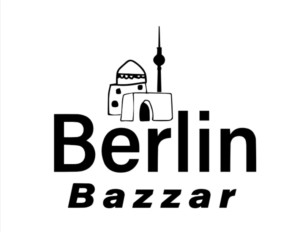The best way to see the Balkans is by bus, and if you don’t have wheels, it is often the only way.
The Balkans is a real bus culture. From Novi Sad to Istanbul and beyond, I must have sampled every bus station of note there is. Bus stations in the Balkans, I have found are great places to observe humanity. In the big towns they are bustling places with their own shadow economy. In the small towns they are places where a provincial romantic can sit in the station café and dream over his rakija of hoping aboard a bus bound for Beč, Beograd or Istanbul and start life anew.
Balkan bus stations are also, it occurs to me never without music. Sometimes it’s boring pop, other times peppy folk music. I remember passing through Skopje bus station in 2005 and hearing Magifico’s “Hir Aj Kam Hir Aj Go” blasting at full volume. I had only ever heard that amazing track played at Robert Soko’s Balkan Beats parties – and I remember thinking, “Wow! Dig this! What a cool place Skopje must be!”
It was also at a rural bus station in Serbia that I saw positively the coolest spontaneous jam session I had ever seen, and something which I felt revealed to me the true character of the Serbs.
I was waiting in Aranđelovac station in central Serbia for my bus to the historical town of Topola. The station was crowded and among those waiting was a group of Gypsy musicians. They sat on a wooden bench, their brass instruments at their feet, were either going to a wedding or a funeral or had just come from one. Suddenly they grew bored of waiting for their bus – either that or they thought they could earn some extra baksheesh – picked up their instruments and began to play.
The Gypsies strolled up and down the bus station platform, playing to the travelers, and before you knew it people were getting up to dance. They linked hands, placed arms on each other’s shoulders and danced a long, snaking kolo behind the musicians.
The band moved across the parking lot, leading the bobbing centipede of dancers behind them; a bottle of slivovitz materialized and was passed from hand to hand; a woman at the head of the line waved a scarf; busses pulled into the lot and were trying to park, but the revelers blocked the way. Bus drivers honked and shouted oaths, but the musicians and dancers remained impervious. It was a crazy, impromptu party which had materialized out of nothing and was conceivable only in Serbia.
Some years later and back in Berlin, I was teaching English to a German professor at Potsdam University and I managed to convey on him something of my passion (or obsession) for Balkan music and the Balkans in general. He decided he would devote a semester at his university in Potsdam to Balkan Beats, and had Robert Soko – originator of the term – and me talk before his students on the phenomenon of Balkan dance music. I for my part told the students about the spontaneous Balkan brass party in Aranđelovac, and how it impressed me as somehow evocative of the freewheeling Balkan mindset.
At the end of the seminar the students were to devise their own project. Inspired by my bus station story, putting brass and bus together, they decided to hire out an open-topped double decker Berlin bus and drive though Berlin Mitte partying with a brass band (The Baksheesh Brass Band, as it turned out), and stopping along the way, inviting passerby to come aboard (https://www.youtube.com/watch?v=MmFjjP4Kl7c). At the end of it all there was a party at at the Admirals Palast at Friedrich Straße, where a reading was given and Robert Soko spun some records.
It’s been a long time since I witnessed that crazy Aranđelovac bus station party, and in the time being my bus trips have brought me further east and further south to Istanbul and beyond. At the moment, dear reader, I am writing you from Adana, Turkey, which has, I must tell you, positively and undisputedly the wildest bus station ever. Really, I am just in plain awe of the place. But this is another story, my dears, maybe for another blog.



